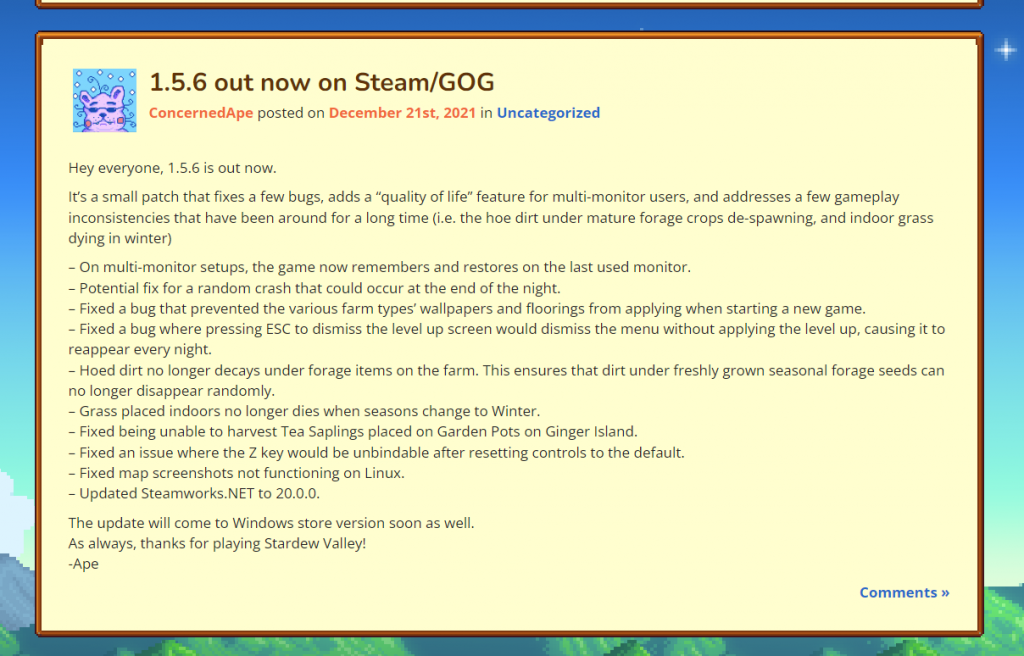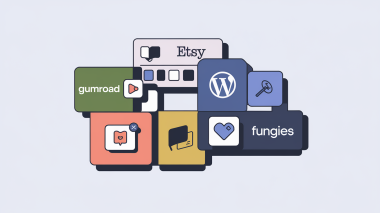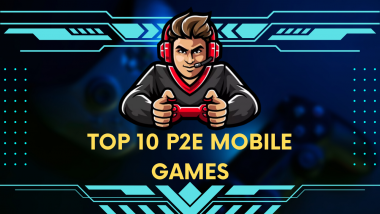Understanding the digital space is key. It’s more than just posting on forums or uploading game trailers to YouTube. It’s about establishing a presence where your audience spends most of their time: online. By navigating the digital landscape strategically, you can take control of how your game is perceived and accessed. The easiest way to do it is by creating a website.
Setting the Stage: Your Game Isn’t Just a Game, It’s a Brand
Your indie game has the potential to grow into something much larger—a brand. This transformation happens when your game’s identity resonates with players, creating a cultural imprint that can last for years.
The Power of Branding
Good branding creates a memorable impression and builds credibility. With your own website, you can showcase your game in the best light, control the narrative, and build a community around your brand. This can foster loyalty and excitement that leads to word-of-mouth promotion, which is gold in the gaming industry.
The Critical Role of Websites in Indie Game Success

Unlocking Potential Through Online Presence
For indie developers, success hinges on exposure. A website amplifies your game’s visibility by providing a searchable and accessible home base for potential players and press alike. It’s where you can showcase trailers, demos, and screenshots, which are essential for capturing interest and drawing players into your game’s universe.
Building Credibility and Professionalism
A polished website also lends credibility to your game. It shows that you are serious about your craft and have invested time into presenting your game professionally. This level of dedication can resonate with players and industry professionals, leading to more opportunities for recognition, such as reviews or features on gaming sites.
The Community Hub: Websites as Gathering Places for Fans
Creating a Virtual Gathering Space

Your website can be so much more than a one-way street of information—it can be a community hub. By incorporating forums, leaderboards, and member-only content, your website becomes a dynamic space where fans can interact with each other and with you, creating a sense of belonging and loyalty around your game.
Supporting Growth Through Engagement
The community that forms around your game can be instrumental in its growth. Fans who feel connected to your game’s world and to other players are more likely to become advocates. They can provide valuable feedback, spread the word, and ultimately help sustain and expand your player base.
Why Social Media Alone Doesn’t Cut It
While social media is a key player in your promotional strategy, it shouldn’t be the entire game plan. By establishing a website, you gain a level of control, security, and stability that social media platforms alone can’t offer. This combination of a strong, owned website and strategic social media use is the winning play for indie game developers aiming for long-term success.
The Risks of Platform Dependency

Dependence on social platforms can be risky. Policy changes or shifts in user trends can diminish your reach overnight. The algorithms that dictate who sees your content can change without notice, making it challenging to ensure your message reaches your audience consistently. Your painstakingly built community can disappear if a platform decides to shut down or suspend your account, through no fault of your own. A website, on the other hand, is a digital property that you own, offering a secure and stable home for your content.
The Power Play: Controlling Your Content and Message
The Autonomy of Owned Web Space
Having a dedicated website puts you in the driver’s seat. You dictate the structure, content, and the way your message is presented. Unlike social media, where your content competes with ads and other posts, your website is a focused environment that you control completely, free from outside noise and distractions.
Crafting a Direct Narrative
With a website, you have the power to craft a narrative that’s true to your vision. Social media often requires tailoring your message to fit the platform, but your website can mirror the experience you intend for your players. Here, your content is the star, showcased exactly as you designed it to be, without competing with the ever-changing landscape of social media feeds.

The Free Website Dilemma: To Pay or Not to Pay?
Deciding whether to invest in a website can feel like standing at a crossroads. On one hand, free website builders offer a quick and cost-effective way to establish your online presence. On the other, paid solutions promise more features and greater flexibility. It’s crucial to weigh the immediate savings against potential long-term benefits when making your choice.
Free Website Builders: What’s the Real Cost?
A free website sounds like a great deal, but what’s the catch? The real cost of a free website comes in the form of limitations on customization, the presence of builder-branding, or restrictions on the number of pages or products you can have. These constraints can impact your site’s ability to grow alongside your game.

Free website services typically offer basic templates and essential features to get you started. However, you might find the design options limited, which can make standing out in the crowded indie game market more challenging. Furthermore, free platforms often place their own branding on your site, which can detract from the professionalism of your game’s brand.
Your Game Development Toolbox: Must-Have Website Features
Your website needs a well-curated set of features to truly succeed. Think of your website as an extension of your game development toolkit; it needs to be armed with the right functionalities to showcase your game effectively.
The Essentials for Every Indie Game Website
 Home Page
Home Page
This is your first impression, the cover of your game’s storybook. It should highlight your game’s unique selling point at a glance.
 Game Trailers and Screenshots
Game Trailers and Screenshots
Show rather than tell. Rich visual content can entice players and spark interest.
 Press Kit
Press Kit
Journalists and bloggers are your allies. Make it easy for them with downloadable assets and game information in one place.
 Mailing List Signup
Mailing List Signup
An email list is your direct line to fans. Use it for announcements, beta tests, and launch dates.
 Social Media Links
Social Media Links
Integrate your social channels to grow your community across platforms.
 Contact Information
Contact Information
Sometimes a simple contact form can be the bridge between you and important industry connections or player feedback.
 Store or Purchase Links
Store or Purchase Links
Direct visitors on where to buy or how to support your game.
 FAQs
FAQs
Answer common questions about your game and save time on customer support.
 User Support
User Support
Provide a section for support to help players troubleshoot issues quickly.
Engaging Your Audience with Interactive Elements
Engagement is the name of the game in website interaction. Integrating features like forums, leaderboards, or even mini-games related to your main game can keep players returning. Blogs and update logs engage the community by showing behind-the-scenes content and development progress. By keeping the conversation going off-screen, you create a lasting relationship with your audience that transcends the game itself.
Content is King: Crafting Compelling Content for Your Indie Game
In the digital domain, content can be the difference between obscurity and fame for an indie game. Content that resonates with your audience can elevate your game’s profile and create a dedicated following.
Telling Your Tale: Crafting Content That Captures Your Game’s Essence
The Story Behind the Game

Share the inspiration, the challenges faced, and the victories celebrated during the game’s creation. This backstory adds depth and personality to your game.
Developer Diaries
These are personal and detailed accounts of the game’s development process. They serve as a window into the creative journey and build a personal connection with the audience.
Character Backstories
If your game includes a narrative or characters, dive into their stories on your website. This can build intrigue and emotional investment in your game before a player even starts the game.
Game Guides and Lore
Expand on the universe you’ve created with rich content that fans can delve into, enriching their gameplay experience.
Blogs and Updates: Keeping Content Fresh and SEO-Friendly
Regular Blog Posts
Share insights on game development, industry trends, or even game strategies. This keeps your content dynamic and engaging.
SEO Practices
Utilize keywords and phrases that potential players might search for. This can improve your website’s visibility and attract organic traffic.
Update Logs

Inform your players about new features, patches, and updates. Not only do these provide vital information, but they also show that your game is actively being cared for and improved.
Guest Posts
Collaborating with influencers, other developers, or industry experts for guest posts can introduce your game to broader audiences and add credibility to your site.
By creating a content-rich website, you’re not just selling a game; you’re offering an experience that begins with the first click and extends well into gameplay.
E-commerce Integration: Selling Your Game Directly
Implementing e-commerce capabilities on your website gives you the power to sell your game directly to players. This not only simplifies the purchasing process for your customers but also allows you to retain more profits and control over the sales experience.

Direct Downloads: Setting Up Shop on Your Website
Easy Access for Players
By allowing players to purchase and download your game directly from your website, you make it more convenient for them, fostering a better customer experience.
Control Over Pricing
Selling directly means you can set your own prices, offer discounts, and bundle deals without having to go through a third-party retailer.
Instant Updates
When players download the game from your site, you can ensure they receive the latest version immediately, improving satisfaction and reducing support requests for outdated versions.
In-Game Purchases: Integrating E-commerce into Your Player Experience
Seamless Transactions
By integrating a store within the game, players can make purchases without leaving the game environment, keeping them engaged and reducing friction in the buying process.
Personalized Offers
You can analyze in-game behavior to offer personalized items or upgrades, enhancing the player’s experience and increasing the likelihood of a purchase.
Security and Trust
It’s essential to implement secure transaction processes to protect user information and build trust with your player base.
Analytics and Adaptation: Understanding Your Audience
By continuously monitoring and adapting your website based on analytics, you can create a more enjoyable experience for visitors, much like updating a game to keep players engaged and satisfied.
Tracking Your Website’s Performance
Track your website’s performance like you track high scores. See where you excel and where you need to level up.
Using Analytics to Improve
Use analytics like game patches – to improve and refine your website’s performance, leading to a better user experience.
Mobile Ready: Optimizing for Players on the Go
In a mobile-first world, ensure your website is ready for players on the move. Optimization can make or break the player’s experience.

The Pocket-Sized Revolution: Making Your Site Mobile-Friendly
Your players aren’t just sitting at their desks; they’re on their phones, looking for their next gaming fix. Ensure that your site performs seamlessly on mobile devices to tap into the vast mobile audience.
Touchscreen Compatible
Design with touchscreens in mind. Users should navigate your website as easily as they would their favorite mobile game, with all elements easily accessible, buttons fingertip-friendly, and content readable without the pinch-to-zoom gymnastics.
Leveraging Social Media Integration
Integrate social media to turn your website into a multiplayer experience. It’s not just about pushing content but also pulling players into a community where their actions on your site can easily connect to their social feeds.
Equip your website with the tools to share content with a single tap or click. Whether it’s a new game trailer or an epic high score, make it simple for users to broadcast to their networks, harnessing the viral potential of your content.
Using Platforms to Drive Traffic Back to Your Site
Your social media profiles should act as checkpoints that lead players back to your website. Strategically place content on your platforms that teases your audience enough to click through to your main domain.
Website Maintenance
Your game’s website requires the same care as the game itself. Regular check-ups and updates ensure it remains relevant, secure, and engaging, keeping up with both technology standards and player expectations.
The Cornerstones of a Successful Indie Game Website
Creating and sustaining a high-quality website is an integral part of indie game development. By focusing on these foundational elements — accessibility, social connectivity, and consistent upkeep — you’ll not only attract players to your digital realm but also build a lasting relationship with them. As you continue to refine your website and align it with your game’s evolving narrative, you’ll create a loyal base of players eager to see what you develop next.




